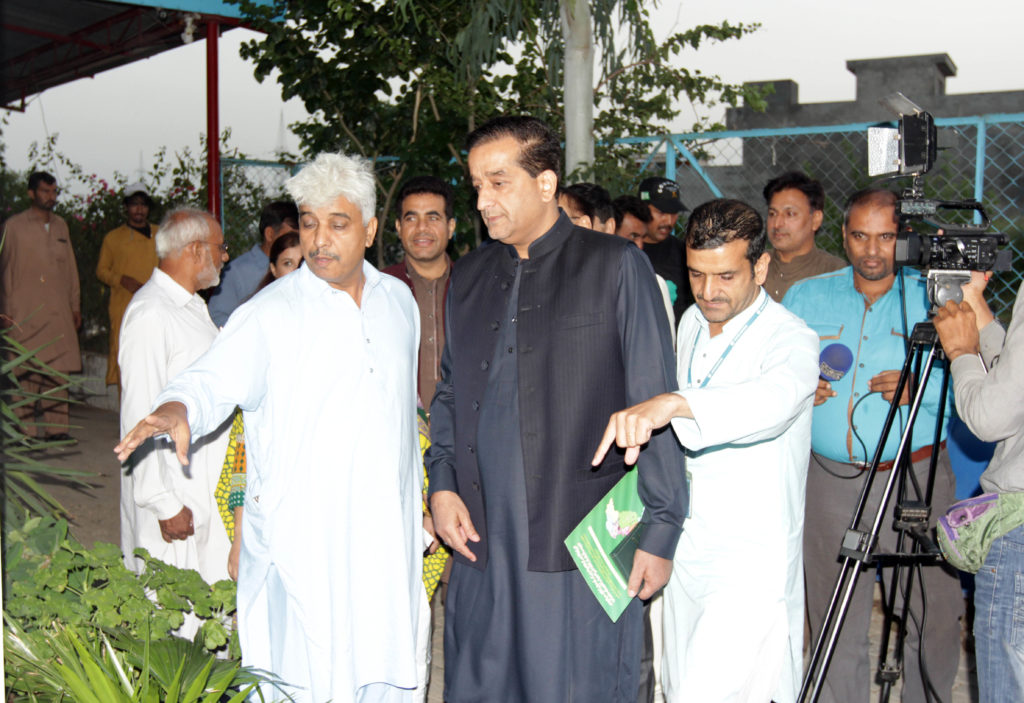Pakistan first Integrated Resource Recovery Centre Street 23, Sector G-15/4, Islamabad
 Open burning of waste is estimated to account for a quarter of the Pakistan’s reported carbon emissions. Dumped waste is also a major cause of diarrheal diseases. A community-based approach to waste management addresses these problems while also creating jobs. Integrated Resource Recovery Center (IRRC) is a decentralized community-based recycling and composting facility which can be built and operated at low costs by using limited mechanical technology, ensuring low operational costs and with minimal equipment breakdowns, while creating job opportunities.
Open burning of waste is estimated to account for a quarter of the Pakistan’s reported carbon emissions. Dumped waste is also a major cause of diarrheal diseases. A community-based approach to waste management addresses these problems while also creating jobs. Integrated Resource Recovery Center (IRRC) is a decentralized community-based recycling and composting facility which can be built and operated at low costs by using limited mechanical technology, ensuring low operational costs and with minimal equipment breakdowns, while creating job opportunities.
United Nations Economic and Social Commission for Asia and the Pacific (UNESCAP) has been promoting decentralized and Integrated Resource Recovery Centers (IRRCs) in secondary cities and small towns in Asia-Pacific including Pakistan with the objective to recover value from waste and provide livelihood opportunities to the urban poor. UN Habitat provides technical assistance for establishment of IRRC.
IRRC in Islamabad
The first pilot IRRC in Pakistan was established in Sector G-15, Islamabad, in 2014 by UN Habitat in collaboration with Dr. Akhtar Hameed Khan Memorial Trust (AHKMT), and support of UNESCAP, following the model’s success elsewhere in Asia. Before the IRRC was set up, there was no waste collection, and household waste was dumped outside houses and periodically burned in G-15. The IRRC has the capacity to process waste from 3,000 households and is currently operating at half-capacity.
Some households separate the waste at source, and this has been actively encouraged (although efforts have not been as successful as hoped). The waste also undergoes further sorting post collection, at the centre. The IRRC team collect waste almost daily (as is necessary throughout the tropical world). This averts insanitary conditions and also makes sorting easier. Waste is sorted by IRRC staff alongside two employees from a contractor who pays a fee to the IRRC and in return receives all the plastic, metal and other dry recyclables collected. The IRRC keeps the organic material and uses this as chicken feed and to produce compost. The IRRC then sells a mixture of chicken manure and compost as a high-quality soil conditioner (or fertiliser). Approximately ten per cent of the waste collected cannot be recycled or composted, and this is disposed of at a municipal landfill.
Replication Potential
The IRRC pilot in Islamabad demonstrates the potential for community-based waste management to improve public health, mitigate climate change and create safe jobs. Analysis suggests that for every dollar invested, the IRRC model offers USD 10 in benefits. The benefits are particularly significant in relation to improved public health and climate change mitigation, although employment creation also plays a part. The IRRC diverts 90 per cent of waste from centralized disposal and is a factor of ten cheaper than providing centralized disposal facilities.
The analysis suggests that community-based waste management approaches offer a ‘best solution for cleaner Pakistan and value for money solution for donors and governments. They would also help address multiple targets under the Sustainable Development Goals, including SDG 3 (Good Health and Well-being), SDG 6 (Clean Water and Sanitation), SDG 11 (Sustainable Cities and Communities), SDG 12 (Sustainable Consumption and Production), SDG 13 (Climate Action), SDG 14 (Marine Life, in the case of settlements on the coast or major rivers) and SDG 15 (Life on Land). In the specific case of Islamabad, there is an urgent need for replication and up-scaling of this successful model to other areas. The IRRC appears to offer a highly cost-effective way of improving waste management in the fast-growing cities of Pakistan. Expansion of IRRC will lead to large scale waste segregation and establishment of recycling industries in the country.
Distinctive features of the IRRC are: 1) use simple technology such as aerated box composting, 2) involvement of local community and 3) a business approach to ensure sustainability. Local organizations can quickly become familiar with this technology and adapt it to the local context. Using technology that requires little energy keeps operation costs low and equipment breakdowns are minimal. Besides, simpler technology is also more labor intensive, thus creating more job opportunities for the poor.
